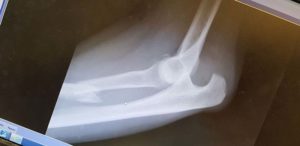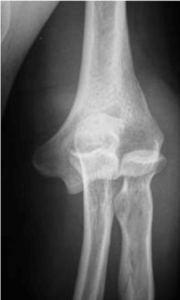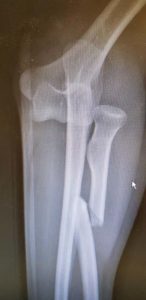Elbow dislocation is one of the most common elbow injuries that occur when you fall. Typically you fall on an outstretched hand and the bones in your elbow are “knocked” out of position. If this happens to you, you will not be in any doubt as to what has happened. You will feel immediate, significant pain in your elbow which will be swollen and deformed. The elbow will not move more than a few degrees and you may get some numbness and tingling in your hand. It is difficult to differentiate this from an elbow fracture.
In most instances this will be treated in a hospital emergency department where pain killers will be provided and an X-ray will be taken. In most instances, the elbow will be “put back” into place right away with or without an anaesthetic. The elbow will then be splinted after it has been examined for stability.
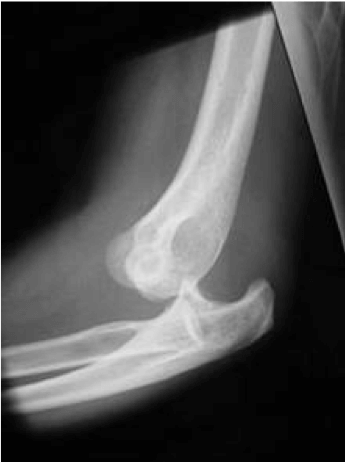
If there has been a fracture or nerve damage these may require further treatment immediately.
If there are no other injuries, then your elbow will be immobilised for a period of time. This time frame will be determined by the nature of the other injuries around the elbow. At some point, a hinged brace may be applied to the elbow to restrict movement, but this may not be necessary in all cases.
The major dangers with elbow dislocation are ongoing instability or stiffness. Instability will result if one of the major stabilising ligaments to the elbow has been damaged, and stiffness will result if the elbow is immobilised (kept still) for too long. Stiffness may result even if the elbow is moved immediately due to the nature of the injury.
The most common injury is to the lateral collateral ligament which results in PLRI or PosteroLateral Rotatory Instability. The great majority of these injuries will do well without surgery if appropriate splinting is followed. Typically a 30 degree extension block is applied for 6 weeks but immediate flexion exercises are started. In the first 2 weeks applying a tubigrip style compressive bandage and taking regular low dose anti-inflammatory tablets (such as Indocid 25mg, 3 times per day – if it is safe to do so) helps settle the swelling of the elbow more rapidly.
If after 3 months the elbow is still ‘loose’, surgery may be required. In certain high demand sports people an immediate repair can be considered.
Damage to the medial collateral ligament is far less common and is usually from a rugby tackle or similar blow to the arm. These rarely need surgery and usually heal well. This is a very different injury to the chronic damage to the MCL in baseball pitchers, javelin throwers and cricketers which usually requires a reconstruction rather than a repair of the tendon.
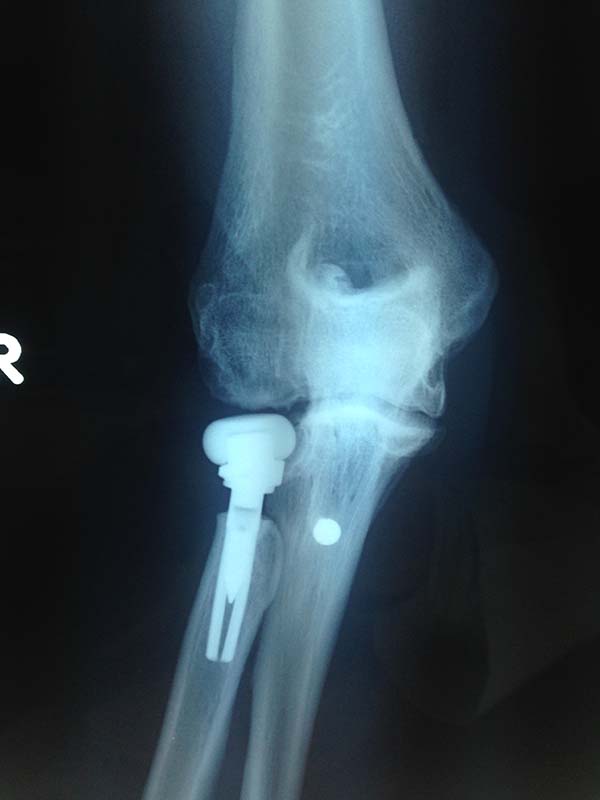
Terrible Triad
When the dislocation is also associated with a fracture to the coronoid (the tip of the ulnar bone which helps keep the ulno-humeral joint stable) and usually a radial head fracture then this is known as a terrible triad injury. These almost always need surgery and should be investigated with a CT scan as well as plain xrays. VPMRI or Varus PosteroMedial Rotatory Instability is a devastating injury which will allow rapid development of arthritis in the elbow if it is not addressed early with an operation. This is usually clearly identified on a CT scan but can be missed on plain xrays.

